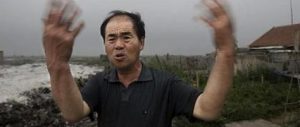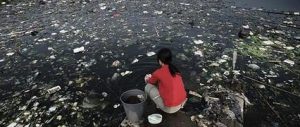American, European and Japanese environmental experts will find familiar elements in China’s environmental laws. China has borrowed heavily from a number of international sources and experts in drafting its laws, but the end product is, in almost every case, uniquely Chinese.
The foundational environmental law in China is, logically enough, the Environmental Protection Law. It was first enacted on a trial basis in 1979 and amended and reenacted, without the “trial” designation, in 1989. This law contains the seeds of most of the environmental laws introduced since 1979. Indeed, the law contains little more than seeds, consisting of only 47 provisions averaging two to three sentences in length.
Following closely on the heels of the Environmental Protection Law were a set of laws that established an environmental regulatory structure for China that is media-specific, end-of-pipe (it controls the discharge of pollutants rather than their creation) – and command-and-control, meaning it relies on administrative enforcement of environmental-performance standards. Water, air, solid and hazardous wastes and noise pollution were each addressed by separate laws (two in the case of water). In their first incarnation, these laws called for the establishment of ambient air, water and noise standards and concentration-based discharge limits for air and water pollution, and decibel limits for noise pollution.
Pollutant discharges by an operating facility above applicable limits could subject the facility owner to administrative sanctions, but generally resulted (where such actions were addressed at all) in orders to reduce the level of discharges within a given period of time. Regulation of solid and hazardous waste imposed fewer obligations, primarily because of the lack of effective options for the off-site disposal of such wastes during the early phase of environmental lawmaking.
Obligations set out in the Environmental Protection Law and echoed in the media-specific laws were further refined by specific rules, and became de facto cross-media, stand-alone regulatory programmes. For instance, a set of regulations providing for Environmental Impact Assessments (EIAs) eventually spawned a new law, and EIAs have since become the main point of entry into China’s environmental-law regime for most entities.
End-of-pipe regulatory models are relatively effective at reducing pollutant loads if the number of “pipes” is constant or growing at a slow pace, but given China’s rapid development, it became apparent that even if existing entities were in compliance with the original concentration-based discharge limitations (clearly an inapplicable assumption in China), the number of new polluting facilities being built would result in ever-increasing pollutant loads. As a result, China began to introduce “total load” limits into its regulatory model to cap the total discharge of certain “major” pollutants.
It also began to draw on international experience with regulatory models that promote sustainability. The Clean Production Law and Circular Economy Law were products of this focus on stopping the creation – not just the discharge – of pollutants. Broadly speaking, these laws impose obligations to make products in a cleaner, more efficient way, by using less hazardous raw materials, energy and water, and producing fewer toxic wastes.
Some of China’s more recent regulatory schemes (none of which has taken the form of a national law) have sprung up in reaction to regulations enacted elsewhere, particularly in the European Union. And so there is a China REACH to regulate new chemical substances, a China RoHS to restrict hazardous substances in IT equipment and a China WEEE to address the recycling and disposal of electrical and electronic waste. However, these names, while convenient short hands, suggest closer parallels between the European and Chinese regulatory approaches than in fact exists.
Pilot projects have been initiated to test market-based variations on the traditional command-and-control models. Experimental sulphur-dioxide trading programmes have been set up in some places, primarily involving power plants that are required to install emissions-monitoring devices sophisticated enough to support the creation of a trading scheme. Environmental exchanges have been established in Beijing, Shanghai, Tianjin and elsewhere in anticipation of the day when large regional or national markets are created by a cap-and-trade system on conventional pollutants or carbon emissions.
While China’s environmental law regime comprises a set of national laws and regulations similar to many western models, it is important to understand that the Chinese tend to define the fundamental aspects of their environmental legislation in terms of a set of systems or principles, not individual national laws.
As Dr Yin Fucai of the Anhui province Environmental Protection Bureau has put it: "[i]n China, every environmental man knows eight environmental regulations and policies.” Or seven or ten depending on which “environmental man” you are talking to, but the perspective revealed by this statement is the same. Most observers seem to ascribe to the notion that there are “three principles” (such as “polluter pays”) and at least seven generally accepted “management rules” (for instance the “Three Simultaneous” system – which requires that a facility and its mandated pollution control measures are designed, constructed, and placed into operation at the same) at the core of China’s environmental regulatory scheme.
These principles and regimes were formulated primarily during the three national environmental-protection conferences in 1973, 1983 and 1989 and set forth in the statements summarising the conference discussions. All of them were incorporated into the 1989 version of the Environmental Protection Law, and other laws and regulations adopted subsequently.
Viewed as a piece of legislative craftsmanship, China’s environmental-law system covers most of the necessary topics. As applied, however, it hangs on China like an ill-fitting suit: too tight here, too roomy there; succeeding only in making everyone uncomfortable and requiring a set of temporary fixes. Some of the problems can be resolved easily. Others will demand changes to the structure of governance in China, involving fundamental shifts in the distribution of power and requiring significant political will to implement.
Charles McElwee is an adjunct professor of law at Shanghai Jiaotong University and programme officer for climate policy at ClimateWorks Foundation. He is the author of Environmental Law in China: Mitigating Risks and Ensuring Compliance. The views expressed herein are his own and not necessarily those of the organisations with which he is affiliated.
Homepage image from maxful



